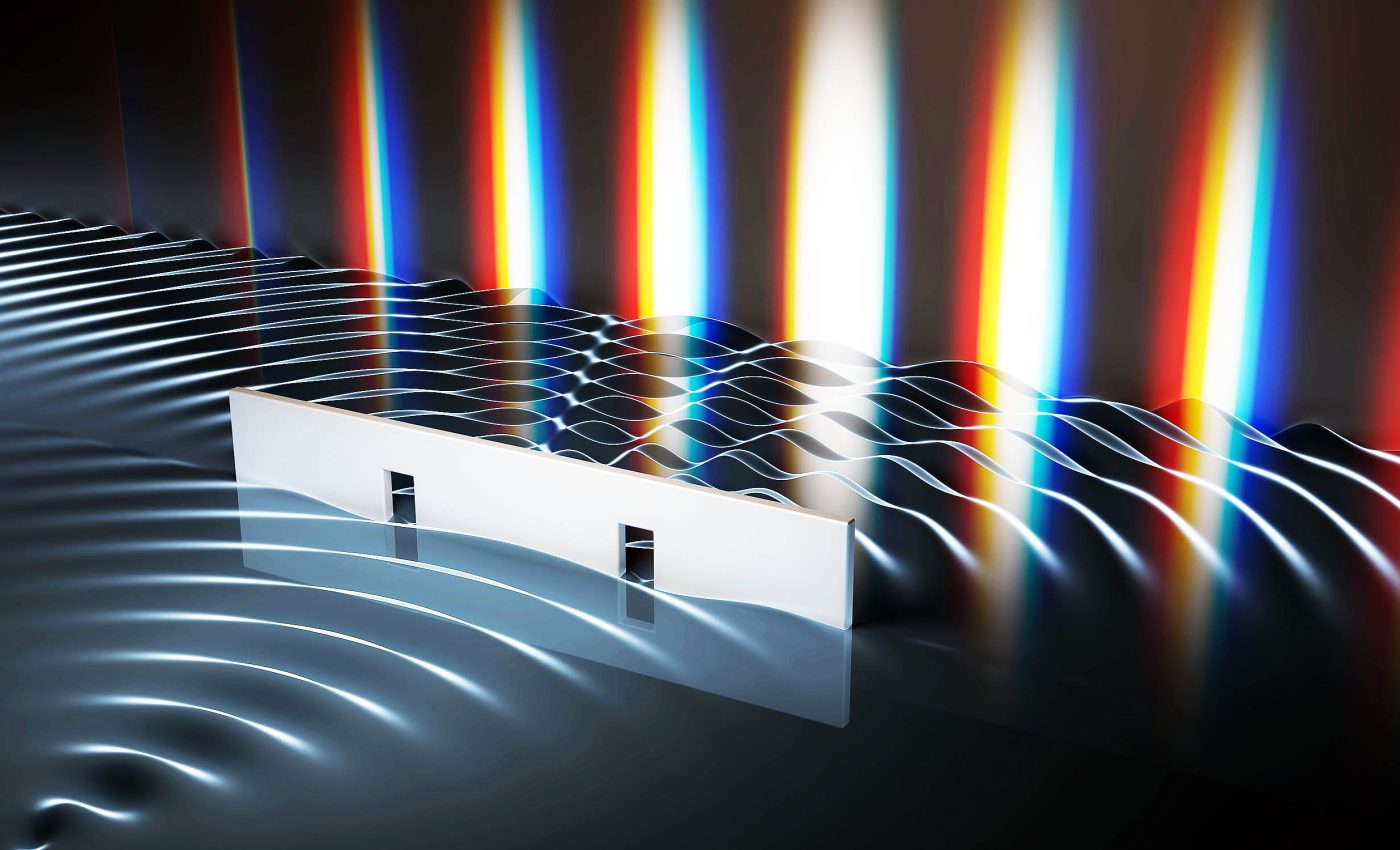
"Dark photon" theory of light would completely upend 100 years of quantum physics
For centuries, most scientists have shared the belief that light behaves as both a wave and a particle. This idea, then, became the central component to quantum theory, sprouting the field of science known as quantum mechanics.
The double-slit experiment supported the idea, showing bright and dark bands that indicated wave-like interference. But now, a new study suggests that this experiment might not lock us into seeing light as a wave.
According to the experts, we can interpret those interference bands using quantum particles alone.
The research was led by Gerhard Rempe, the director of the Max Planck Institute for Quantum Optics. He teamed up with collaborators at Federal University of São Carlos and ETH Zurich for the study.
Modern physics and our view of light
In 1801, Thomas Young introduced an experiment by shining light through two narrow openings to produce intersecting fringes on a screen. His findings led many to conclude that light must be a wave.
A century later, quantum mechanics began to take shape, revealing that quantum particles like electrons could mimic wave-like light interference too.
Albert Einstein’s work on the photoelectric effect showed that light travels in discrete packets called photons. Niels Bohr then elaborated on wave-particle duality, ushering in one of the cornerstones of modern physics.
Dark and visible photons
The new approach from the research team explores the concept of bright and dark modes.
In their view, interference patterns can emerge from combining “detectable” and “undetectable” photon states. These bright states interact with an observer, while dark states remain hidden.
Such hidden photons might linger at places where we would normally think the light cancels out. Observers who try to track the path of these photons alter the state, flipping what was dark into bright or vice versa.
From this perspective, the light pathways can be viewed as quantum superpositions, rather than purely classical wave interference.
Quantum particles and light interference
“In my humble opinion, our description is meaningful as it provides a quantum picture (with particles) of classical interference (with waves): maxima and minima result from entangled bright (that couple) and dark (that do not couple) particle states,” said Rempe.
Physicists once believed that any point of total destructive interference prevented light from interacting with matter.
In the new framework, even a place with zero average electric field can host particles that standard measurement devices might miss.
The group emphasizes that these findings do not throw out past results but reveal a new layer of detail.
Rempe said their model helps clarify parts of a long-standing debate – like which-path detection – that once involved major figures in science, including Newton, Maxwell, Einstein, Millikan, and others.
Wave-only theories vs. dark photons
Classical physics can explain most everyday optical events. Yet certain experiments in quantum optics highlight outcomes that purely wave-based theories cannot handle.
Researchers have long known that Maxwell’s equations begin to fail in scenarios where single photons interact with atoms on tiny scales.
This new framework places particles at the heart of interference. The wave-like fringes may just be statistical maps of how bright or dark these quantum states are.
Measuring certain properties that push photons into detectable or undetectable modes can influence outcomes.
How measurement changes things
Any attempt to pinpoint a photon’s route through two slits runs into the famous uncertainty principle. A quick look might destroy the fringe pattern.
In these studies, measuring the photon is less about giving it a momentum kick and more about switching the dark state to a bright one.
Decades of work in quantum information science hinted that delicate systems can be “observed” without collapsing them entirely.
The new interpretation builds on that notion. If the observer couples to a photon hidden in a dark region, the state might become bright enough to be registered.
Particle-based light interference
Wave-particle duality is central in physics curricula around the world, teaching that light and matter can exhibit both wave-like and particle-like behavior.
Rather than uprooting that duality, this theory nudges us to see interference in a purely particle-based explanation. It keeps the quantum superposition principle at the core.
On a philosophical level, some scientists suggest that we might shift our mental picture toward probabilities of bright and dark particles.
Still, most institutions will continue to teach the wave framework as a useful approximation that works in many practical settings.
Why are dark photons important?
The updated model might spark creative ways of detecting light in places once thought to be “voids.”
Novel detectors could be devised to probe areas of destructive interference with advanced atomic or ionic systems. These methods might eventually shape futuristic optical technologies.
Experimental physicists may also look for subtle traces of photons lurking in dark states. If those photons can be coaxed into bright states without disturbing other properties, entirely new measurement techniques might arise.
That prospect has captured attention because it challenges everyday views of how light interacts with sensors.
Searching for light’s true nature
The research prompts the question of what other fundamental assumptions may give way under quantum scrutiny.
Some researchers are already attempting to extend these quantum ideas about light to larger-scale experiments, including matter waves.
Even aspects of gravitational wave detection might gain fresh insights from the concept of dark states.
Critics point out that wave-based models still work splendidly at larger distances. This new quantum picture of light appears indispensable only when single particles and atoms come into play.
Whether it replaces or merely complements classical interpretations remains the next big debate.
The study is published in the journal Physical Review Letters.
—–
Like what you read? Subscribe to our newsletter for engaging articles, exclusive content, and the latest updates.
Check us out on EarthSnap, a free app brought to you by Eric Ralls and Earth.com.
—–













